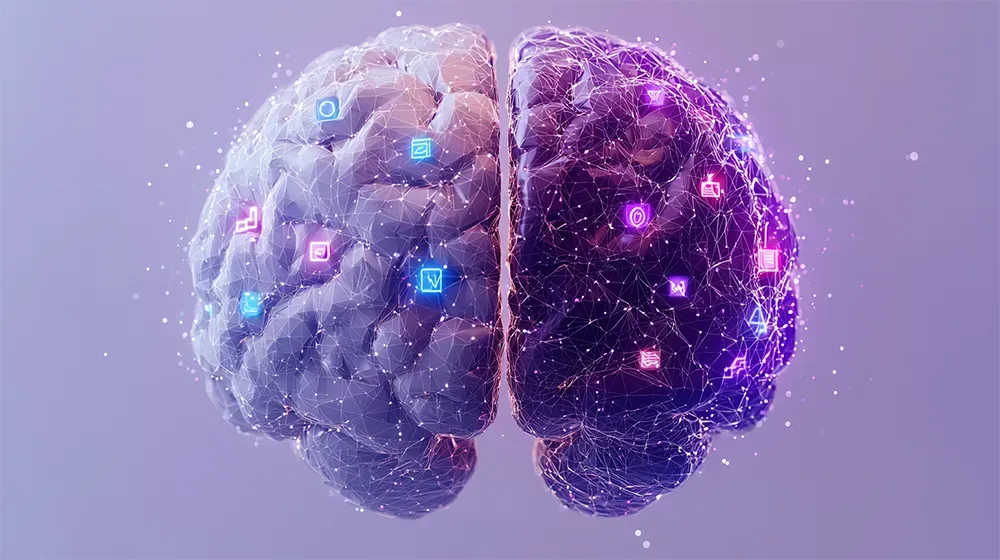Understanding Edge Computing with an Innovation Speaker's Help

Understanding Edge Computing with an Innovation Speaker's Help
In today's rapidly evolving technological landscape, understanding cutting-edge concepts such as edge computing can be a challenging endeavor. However, with the help of an innovation speaker, the complexities associated with this emerging field can be demystified and made more accessible. By presenting the basics of edge computing in a clear and engaging manner, these speakers play a crucial role in bridging the gap between intricate technological advancements and real-world application.
Understanding the Basics of Edge Computing
To comprehend the significance of an innovation speaker in elucidating edge computing, it is essential to first grasp the fundamentals of this transformative concept. At its core, edge computing involves the decentralization of data processing and storage, bringing computational power and storage capabilities closer to the source of data generation.
This decentralization is achieved by distributing computing resources to the network edge, where devices and sensors are located. Instead of relying solely on centralized cloud infrastructure, edge computing empowers these devices and sensors to perform local data processing and analysis. By doing so, edge computing minimizes latency, optimizes bandwidth utilization, and enhances the overall performance of applications and services.
Imagine a scenario where a fleet of autonomous vehicles is navigating through a busy city. These vehicles rely on instant data analysis to detect and avoid obstacles in real-time. With edge computing, the vehicles can process the data they collect from their sensors right at the edge, without having to send it to a distant cloud server for analysis. This reduces the time it takes for the vehicles to make decisions, ensuring their safety and efficiency on the road.
Another example where edge computing shines is in the realm of manufacturing. In a modern manufacturing facility, numerous sensors and devices are constantly monitoring critical parameters such as temperature, pressure, and machine performance. By processing this data at the edge, the facility can quickly identify any anomalies or deviations from optimal conditions. This enables proactive maintenance and ensures operational efficiency, minimizing downtime and maximizing productivity.
Furthermore, edge computing enables real-time data processing and analytics, making it particularly valuable in scenarios with stringent latency requirements. Consider, for example, an autonomous vehicle that relies on instant data analysis to navigate obstacles or a manufacturing facility that needs to monitor critical parameters to ensure operational efficiency. By processing data at the edge, these applications can make informed decisions without depending on a distant centralized cloud infrastructure.
The Role of an Innovation Speaker in Simplifying Complex Technologies
The realm of complex technologies can often feel overwhelming and intimidating, especially for those outside the industry. This is where an innovation speaker comes in, leveraging their expertise and communication skills to deconstruct intricate concepts such as edge computing into easily digestible fragments. By utilizing relatable metaphors, real-life examples, and engaging narratives, these speakers break down complex ideas, allowing audiences to comprehend and appreciate their significance.
In addition to simplifying the technical aspects, innovation speakers also shed light on the potential applications and benefits of edge computing. They paint a vivid picture of how edge computing impacts various industries, ranging from healthcare and finance to transportation and manufacturing. Through these practical illustrations, audiences gain a clearer understanding of how this technology can revolutionize their own fields and operations.
Imagine a world where healthcare providers can access patient data in real-time, allowing for faster and more accurate diagnoses. An innovation speaker would describe how edge computing enables medical devices to collect and process data at the point of care, eliminating the need for data to travel back and forth to centralized servers. This not only saves valuable time but also enhances patient outcomes by enabling healthcare professionals to make informed decisions quickly.
Furthermore, finance professionals attending an innovation speaker's talk would learn about the potential of edge computing to transform the banking industry. The speaker might explain how edge computing can enable banks to process transactions securely and efficiently, reducing the risk of fraud and improving customer experience. They could provide examples of how edge computing can facilitate real-time fraud detection, ensuring that customers' financial information remains protected.
Transportation and logistics companies would also benefit from an innovation speaker's insights into edge computing. The speaker might discuss how this technology can optimize route planning and fleet management, leading to cost savings and improved delivery times. By leveraging edge computing, companies can analyze real-time data from sensors installed in vehicles, enabling them to make data-driven decisions to enhance operational efficiency.
Manufacturing is another industry that can be revolutionized by edge computing, as an innovation speaker would explain. They might describe how edge computing can enable predictive maintenance, where machines can detect potential issues before they occur, reducing downtime and improving productivity. The speaker could provide examples of how edge computing can facilitate real-time monitoring of equipment, allowing manufacturers to optimize their production processes and minimize disruptions.
Overall, the role of an innovation speaker in simplifying complex technologies goes beyond just breaking down technical jargon. They provide real-world context and practical examples that help audiences grasp the potential of these technologies in their respective industries. By bridging the gap between complex concepts and everyday applications, innovation speakers empower individuals and organizations to embrace and leverage the power of innovation.
Applying Edge Computing Concepts in Real-Life Scenarios
The potential applications of edge computing are vast and varied, encompassing a multitude of industries and sectors. An innovation speaker excels at showcasing how edge computing concepts can be applied in real-life scenarios, bringing these abstract ideas to life.
One fascinating application of edge computing is in the field of remote healthcare monitoring. Imagine a world where patients can receive real-time monitoring from the comfort of their own homes. An innovation speaker might delve into the details of how edge computing enables this revolutionary approach to patient care. They could explain how edge devices placed in patients' homes collect and analyze vital signs, such as heart rate, blood pressure, and oxygen levels. This real-time data is then transmitted to healthcare professionals who can monitor patients remotely and provide immediate interventions if necessary. By leveraging edge computing, remote healthcare monitoring promises faster response times, enhanced treatment outcomes, and improved overall patient care.
Furthermore, an innovation speaker might explore the potential of edge computing in the development of smart cities. They could paint a vivid picture of a city where edge devices are seamlessly integrated into various infrastructure systems, driving efficiency and improving the quality of life for residents. For example, they might discuss how edge computing can optimize transportation systems by enabling real-time traffic analysis and adaptive traffic light control. This would result in smoother traffic flow, reduced congestion, and shorter travel times for commuters. Additionally, the speaker could highlight how edge computing can enhance public safety measures by enabling real-time data analysis for emergency services. This would enable faster response times and more effective emergency management.
Another aspect of smart cities that an innovation speaker might touch upon is the role of edge computing in creating smarter energy grids. They could explain how edge devices can collect data on energy consumption patterns, allowing for more efficient distribution and utilization of energy resources. By leveraging edge computing, cities can optimize energy usage, reduce waste, and promote sustainability.
As the innovation speaker delves into these real-life scenarios, they bring to life the potential of edge computing. Through their detailed explanations and examples, they inspire and educate audiences about the transformative power of this technology. Whether it's revolutionizing patient care or creating smarter cities, edge computing has the potential to reshape our world in profound ways.
How an Innovation Speaker Illustrates the Benefits of Edge Computing
Beyond simply explaining the technical nuances and applications of edge computing, an innovation speaker dedicates significant effort to showcasing the inherent advantages of this paradigm. They emphasize key benefits such as reduced latency, improved reliability, enhanced security, and increased cost efficiency.
Consider, for example, the benefits of reduced latency. By bringing computing power closer to the source of data generation, edge computing enables real-time analysis and decision-making. This has game-changing implications in industries such as finance, where split-second transactions can make or break fortunes, and in autonomous vehicles, where minimal latency can prevent accidents and save lives.
Reduced latency is not the only advantage that an innovation speaker highlights when discussing edge computing. Improved reliability is another significant benefit. With edge computing, data processing and storage occur closer to the devices generating the data, reducing the reliance on centralized servers. This decentralized approach enhances the overall reliability of the system, as it minimizes the risk of single points of failure. In industries like healthcare, where uninterrupted access to critical patient data is essential, the reliability of edge computing can have life-saving implications.
Enhanced security is yet another advantage that an innovation speaker emphasizes when discussing edge computing. By processing data closer to the source, edge computing reduces the need for data to travel long distances, thus minimizing the exposure to potential security breaches. Additionally, edge computing enables the implementation of localized security measures, such as encryption and authentication, at each edge device. This multi-layered security approach provides an extra level of protection against cyber threats, making edge computing an attractive option for industries dealing with sensitive data, such as banking and government.
Furthermore, an innovation speaker highlights the increased cost efficiency that edge computing brings. By reducing the need for large-scale centralized infrastructure, edge computing can significantly lower operational costs. The decentralized nature of edge computing allows organizations to optimize their resource allocation, as they can allocate computing power and storage where it is needed most. This flexibility not only saves costs but also enables scalability, as organizations can easily add or remove edge devices based on demand. This cost-efficient approach makes edge computing particularly appealing to businesses operating in resource-constrained environments or those looking to maximize their return on investment.
In conclusion, an innovation speaker goes beyond technical explanations and dives deep into the benefits of edge computing. They highlight reduced latency, improved reliability, enhanced security, and increased cost efficiency as key advantages. By providing real-world examples and industry-specific use cases, an innovation speaker paints a comprehensive picture of how edge computing can revolutionize various sectors and drive innovation forward.
Future Trends in Edge Computing
The journey of edge computing is far from complete, and an innovation speaker stays on top of the latest developments and future trends. By providing insights into the evolving landscape of edge computing, these speakers keep audiences informed and inspired, igniting a passion for staying at the forefront of technological advancements.
One promising trend is the convergence of edge computing with artificial intelligence (AI) and machine learning (ML). By leveraging the computational capabilities of edge devices, AI algorithms can be executed locally, reducing reliance on centralized cloud infrastructure. This not only enhances privacy and security but also enables more efficient and dynamic decision-making in real-time applications.
Conclusion
Understanding edge computing may initially seem like a daunting task, but with the guidance of an innovation speaker, it becomes an exciting journey of discovery. By demystifying complex concepts, providing real-life examples, and highlighting the numerous benefits and future trends of edge computing, these speakers empower individuals and organizations to embrace this transformative technology. So, take that first step toward understanding edge computing with the help of an innovation speaker, and unlock limitless possibilities in the digital era.
Frequently Asked Questions
What is edge computing?
Edge computing involves the decentralization of data processing and storage, bringing computational power and storage capabilities closer to the source of data generation. This minimizes latency, optimizes bandwidth utilization, and enhances the overall performance of applications and services.
How does an innovation speaker simplify complex technologies like edge computing?
An innovation speaker simplifies complex technologies by breaking down intricate concepts into easily digestible fragments using relatable metaphors, real-life examples, and engaging narratives. They provide practical illustrations to help audiences understand the significance and potential applications of edge computing in various industries.
What are the benefits of edge computing?
Edge computing offers several advantages, including reduced latency for real-time analysis and decision-making, improved reliability through decentralized processing and storage, enhanced security with localized security measures, and increased cost efficiency by optimizing resource allocation and scalability.
Contact Dr Mark van Rijmenam, an Innovation Speaker, for your event
If you're seeking to demystify intricate technological concepts like edge computing for your team or audience, there's no better choice than Dr Mark van Rijmenam. With his exceptional ability to simplify complex ideas and provide real-life examples, he will enlighten your audience about the transformative power of edge computing. He will not only explain the technical nuances but also highlight the numerous benefits and future trends in the field. His engaging and insightful sessions will empower your organization to embrace and leverage these technological advancements. To hire Dr van Rijmenam for your next event, simply complete the form below. We promise to get back to you within 24 hours, setting you on an exciting journey of discovery in the digital era.





